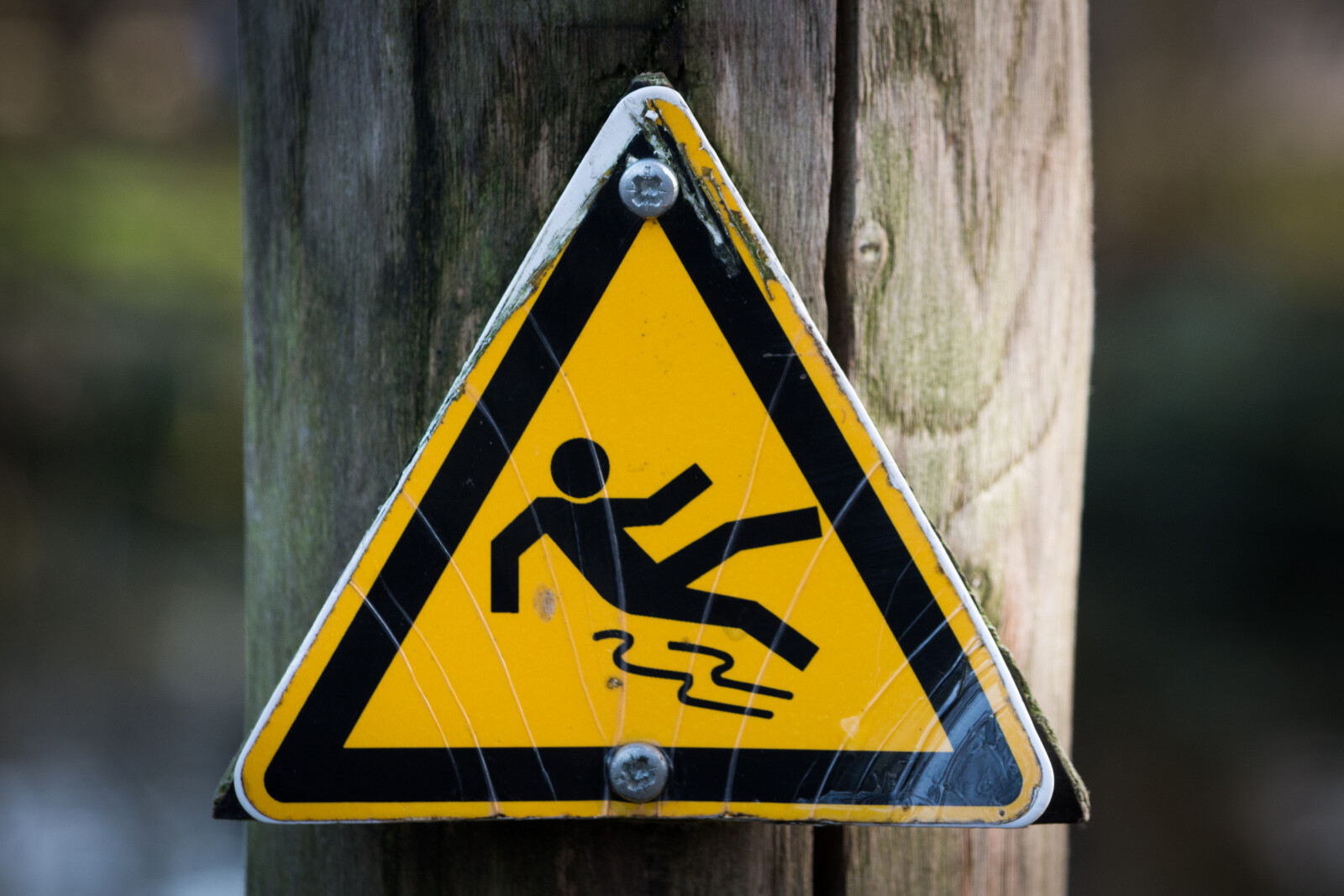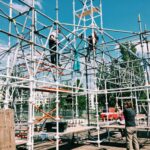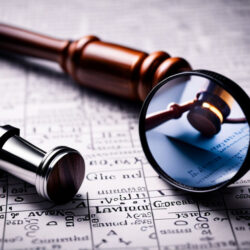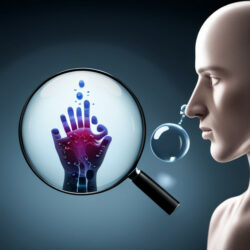Deadly Workplace Hazards: How to Avoid Slip and Fall Accidents
Workplace accidents, specifically slips and falls, can result in a profound impact on both employee well-being and company resources. This article delves into the causes of such accidents, preventive measures, and post-incident steps. By understanding these dynamics, we can create safer work environments, protect employees, and curb the financial repercussions linked to these accidents. Awareness, knowledge, and action can significantly minimize these unfortunate occurrences.

Key Takeaways
- Use caution when walking on slippery surfaces and be aware of your surroundings to prevent slip and fall accidents at work.
- Wear appropriate footwear for the working environment and follow safety protocols, such as using handrails when available, to minimize the risk of accidents.
- Practice good housekeeping by keeping workspaces clean and organized, promptly cleaning up spills, and removing obstacles from aisles and doorways to prevent tripping hazards.
- Seek immediate medical attention if you experience a slip and fall accident at work, report the incident to your supervisor or employer, gather evidence, and consult with an experienced attorney to understand your legal rights and pursue appropriate action.
Understanding the Risks: Slip and Fall Accidents
Understanding the risks associated with slip and fall accidents is crucial, as these incidents account for a staggering 25% of all reported injury claims, causing millions of lost workdays annually. Identifying workplace hazards is a key preventive measure. This involves regular inspections to identify potential risks like wet floors, cluttered walkways, or uneven surfaces. Promoting safety awareness is equally important. Employees should be trained to recognize hazards, follow safety protocols, and wear appropriate footwear. They should also be encouraged to report unsafe conditions immediately. While some accidents may still occur, understanding the risks and taking proactive steps can significantly reduce the frequency and severity of slip and fall incidents, promoting a safer and more productive work environment.
Identifying Common Causes of Workplace Falls
In the realm of occupational safety, focusing on both the identification of common causes of workplace falls and the implementation of effective preventive measures is crucial for reducing the incidence of these potentially debilitating accidents. Among these causes, slippery surfaces, cluttered workspaces, and inadequate lighting stand out. The importance of safety protocols cannot be overstated in tackling these issues. Regular inspections, prompt reporting, and remediation of hazards, and adherence to safety procedures are all vital. Additionally, the role of proper footwear is often overlooked, yet it is a significant factor. Employees should be encouraged to wear shoes suitable for their work environment, providing the necessary grip and stability to prevent slips and falls. By addressing these aspects, the frequency and severity of workplace falls can be substantially reduced.
The Role of Footwear in Preventing Accidents
The proper selection of footwear plays a critical role in preventing accidents at work, but it also contributes to overall employee comfort and productivity. The role of footwear in preventing accidents is often underestimated, yet it is a significant factor in maintaining workplace safety. Choosing shoes with non-slip soles, good ankle support, and adequate cushioning can drastically reduce the likelihood of slip and fall incidents. Additionally, the impact of weather conditions on these incidents should not be overlooked. Wet or icy conditions can render even the most careful steps hazardous, but the right footwear can provide the necessary traction to navigate these situations safely. In conclusion, a conscious choice of appropriate footwear, considering work environment and weather conditions, is a fundamental step towards minimizing workplace accidents.
Emphasizing Cleanliness and Organization at Work
Promoting a clutter-free work environment significantly decreases the risk of slip and fall accidents, emphasizing the importance of cleanliness and organization at work. Regular maintenance of workspaces not only improves efficiency but also contributes to safety. It reduces hazards such as tripping over loose objects or slipping on spilled substances. The benefits of regular maintenance extend beyond the immediate prevention of accidents. It also promotes a healthier, more productive atmosphere, enhancing workforce morale and reducing downtime due to injuries. Creating a culture of safety at work involves all employees in maintaining cleanliness and organization. This should be seen not as an additional task, but as an integral part of daily operations. Hence, a clean, organized workspace is an essential component of workplace safety.
The Importance of Reporting Potential Hazards
Recognizing potential hazards at the workplace and promptly reporting them not only fosters a safer environment but also significantly reduces the risk of injury-related downtime. The importance of hazard identification lies in its capacity to preemptively address potential risks, thereby preventing accidents and promoting a culture of safety. Employers and employees alike should actively participate in hazard identification processes, which involve regular inspections, incident investigations, and the encouragement of open communication channels for reporting dangerous conditions. Comprehensive training programs should also be established to enhance everyone's understanding of workplace safety protocols. Moreover, management should foster a non-retaliatory environment that encourages workers to express their safety concerns. In essence, a proactive approach to hazard identification and reporting is a critical component of any successful workplace safety strategy.
The Impact of Weather Conditions on Slip and Fall Incidents
In analyzing worker's safety, it's crucial to consider weather conditions' significant impact on the incidence of slip and fall accidents. Varying weather conditions, from icy winters to rainy summers, can drastically alter the safety of the workplace environment. The importance of proper footwear in different weather conditions cannot be overstated. Equipping workers with footwear designed for specific weather conditions can drastically reduce the risk of accidents. Furthermore, employers should implement strategies for preventing slip and fall accidents during inclement weather. These strategies may include maintaining clean and dry floors, providing non-slip mats, and offering training to employees on how to safely navigate through hazardous weather conditions. Each of these efforts contribute to a safer, more secure working environment.
Promoting Safety With Adequate Lighting
We should place high importance on the installation of adequate lighting in all areas of the workplace, for it plays a pivotal role in reducing the risks of slip and fall accidents. Proper lighting ensures that employees can clearly see the path ahead, identify potential hazards, and navigate safely. The importance of proper signage cannot be overstated in these settings. Clear, well-lit signs can guide employees, pointing out slippery areas or other potential dangers. The role of safety equipment, such as anti-slip mats and handrails, is also crucial. These elements should be strategically placed in well-lit areas to enhance their effectiveness. Thus, by combining adequate lighting, proper signage, and safety equipment, we can significantly reduce the likelihood of workplace accidents.
The Role of Proper Training in Accident Prevention
Consistently emphasizing the importance of proper training can significantly lower the frequency of workplace accidents by equipping employees with the necessary knowledge and skills to identify and avoid potential hazards. This underscores the importance of employee engagement in safety training, as it not only instills a sense of responsibility but also promotes a culture of safety. Supervision plays a crucial role in accident prevention as well; proficient leaders can identify potential issues and ensure adherence to safety protocols. In essence, proper training, combined with active engagement and vigilant supervision, creates a safer work environment. These measures, when integrated into everyday operations, can effectively reduce workplace accidents, protecting both the employees and the organization's bottom line.
Statistics Highlighting the Severity of Slip and Fall Accidents
Undeniably, the statistics paint a stark picture of the severe consequences and high frequency of slip and fall accidents in workplaces across the nation. These incidents, leading to workers' compensation claims, account for 25% of all reported injury claims and result in 95 million lost work days per year. The economic impact of slip and fall accidents is significant, burdening companies with costs associated with employee medical expenses, lost productivity, and potential legal implications. Furthermore, the psychological effects of workplace falls cannot be underestimated. They can breed fear and anxiety among the workforce, leading to decreased morale and job satisfaction. Consequently, it is vital for businesses to implement robust safety measures and preventive strategies to mitigate these devastating accidents.
What to Do Immediately After a Workplace Fall
After a workplace fall, it is crucial to seek medical help for any injuries, no matter how minor they may seem, and to promptly report the incident to your supervisor or employer, ensuring all details are accurately documented for future reference. This is the first step towards creating a culture of safety in the workplace. Just like steps for preventing slip and fall accidents at home, this culture values vigilance, awareness, and proactive behaviors. Proper lighting, clutter-free spaces, and immediate cleanup of spills are all important preventative measures. Training and education on potential hazards and safe practices are also key components. By fostering this safety-minded environment, we not only protect workers but also promote productivity and wellbeing in the workplace.
The Process of Reporting a Workplace Accident
In order to effectively carry out the process of reporting a workplace accident, employees must promptly write up and submit a comprehensive, fact-based report to their supervisor or designated safety officer. Understanding legal obligations is crucial in this context. The report should detail the circumstances leading to the accident, any witnesses, and the extent of injuries sustained. Timely reporting is essential as it aids in quick intervention, accident investigation, and implementing corrective measures to prevent recurrences. The importance of communication cannot be overstated in this process. Employees should maintain open dialogue with their supervisors, human resources, and if necessary, legal counsel, to ensure proper handling of the incident and adherence to all legal and company requirements.
Gathering Evidence for a Slip and Fall Accident
You should take photographs of the accident site and gather witness statements, for these are key components in building a strong case after a slip and fall accident. Documenting injuries immediately after the incident provides a tangible record of the harm suffered. This includes not only visible wounds but also any internal discomfort or pain. Photos of the exact location where the slip or fall occurred are crucial in establishing the cause of the accident. Witness testimonies can corroborate your account of events, lending credibility to your claim. However, it's ideal to obtain these statements promptly as memories can fade over time. In essence, a comprehensive collection of evidence aids in establishing liability and the extent of damages, thereby strengthening your case.
Legal Rights Following a Workplace Accident
While it's essential to understand that employees have certain legal rights following a workplace accident, it's equally crucial to recognize that these rights can vary depending on the specifics of the accident and the nature of the injuries sustained. Understanding legal rights involves grasping the scope of workers' compensation laws, which may include lost wages, medical expenses, and disability benefits. Employees should also be aware of their right to return to work, which may be subjected to certain conditions dependent on their medical status. In severe cases, seeking compensation options outside the workers' compensation system, such as a personal injury lawsuit, may be necessary. An attorney's guidance is invaluable in navigating these complex issues, ensuring that the injured worker's rights are protected.
Workers’ Compensation for Slip and Fall Accidents
Through the lens of workers' compensation, we must address the financial and health implications of slip and fall accidents in the workplace. They are the leading cause of workers' compensation claims, often leading to significant financial impact and loss of productivity for businesses. Understanding workers' rights is crucial in these scenarios. Employees should be aware of their entitlement to compensation for medical expenses and lost wages. Employers, on the other hand, must implement robust safety protocols to prevent such accidents. The financial impact of slip and fall accidents can be substantial, leading to high compensation payouts and increased insurance premiums. It's essential for both parties to comprehend the gravity of these accidents and strive for a safer work environment.
Case Studies: Lessons From Real-Life Slip and Fall Accidents
Analyzing various case studies provides critical insights into the circumstances and outcomes of real-life slip and fall accidents, helping both employers and employees to understand the importance of proactive safety measures in the workplace. These lessons from real life slip and fall accidents highlight the need for comprehensive safety training and strict adherence to workplace protocols. For instance, a case study involving a warehouse worker emphasized the need for clear walkways and proper footwear. Another study, detailing an office employee's fall, underscored the importance of promptly addressing reported hazards. These case studies: preventing workplace falls, serve as stark reminders that prevention is paramount. They underscore that everyone in the workplace shares the responsibility for maintaining a safe environment.
Frequently Asked Questions
How Can Employers Create a Culture of Safety to Prevent Slip and Fall Accidents at Work?
Employers can foster a safety culture to prevent slip and fall accidents by implementing comprehensive employee training that emphasizes hazard recognition and safe work practices. Additionally, introducing a 'Safety Rewards' program can motivate employees to actively participate in maintaining a safe workplace. Regular safety audits, prompt hazard remediation, and open communication about safety concerns further enhance this culture, reducing the risk of accidents.
What Role Does Fatigue Play in Worker Slip and Fall Accidents and How Can It Be Minimized?
Fatigue plays a significant role in worker slip and fall accidents, often impairing attention, judgement, and physical ability. To minimize this risk, effective fatigue management is crucial, involving regular breaks and balanced workload. Additionally, shift scheduling should consider workers' circadian rhythms to ensure they are working during their most alert hours. Adequate rest periods between shifts also help to mitigate fatigue-related workplace accidents.
What Kind of Exercises or Physical Training Can Help Workers to Improve Their Balance and Avoid Falls?
Exercises promoting posture correction and core strengthening can significantly help workers improve balance and prevent falls. Posture correction exercises such as shoulder blade squeezes and chest stretches enhance body alignment. Core-strengthening exercises, including planks and leg lifts, improve stability and balance. Regular practice of these exercises can help workers navigate workplace environments more safely, minimizing the risk of slip and fall accidents. As always, it's important to consult a health professional before starting any new exercise regimen.
Can Regular Safety Audits Help in Preventing Workplace Slip and Fall Accidents?
Yes, regular safety audits play a crucial role in preventing workplace slip and fall accidents. Through audit implementation, hazards in the workplace can be systematically identified and addressed. This process includes evaluating the condition of floors, assessing the appropriateness of lighting, and ensuring all potential tripping hazards are removed. Thus, regular safety audits facilitate the creation of a safer work environment, reducing the likelihood of slip and fall incidents.
How Does the Use of Safety Equipment, Other Than Footwear, Contribute to Preventing Slip and Fall Accidents at Work?
Safety equipment, beyond footwear, plays a crucial role in preventing workplace slip and fall accidents. Safety signage, for instance, alerts workers to potential hazards, ensuring they proceed with caution in risky areas. Adequate lighting conditions are equally important as they enhance visibility, helping to identify and avoid obstacles. Furthermore, equipment like handrails and non-slip mats can also reduce the risk of falls. Therefore, a combination of these safety measures can significantly contribute to a safer working environment.
Conclusion
In conclusion, the ubiquity of slip and fall accidents in the workplace underscores the ongoing need for vigilance, prevention, and awareness. By prioritizing cleanliness, appropriate footwear, hazard reporting, and understanding legal rights, the frequency and impact of these accidents can be diminished. Therefore, the integration of these strategies is imperative to safeguard employees, promote safer work environments, and mitigate the substantial economic burden associated with workplace accidents.

This post has been generated by AI and was not reviewed by editors. This is Not legal advice. Please consult with an attorney.




